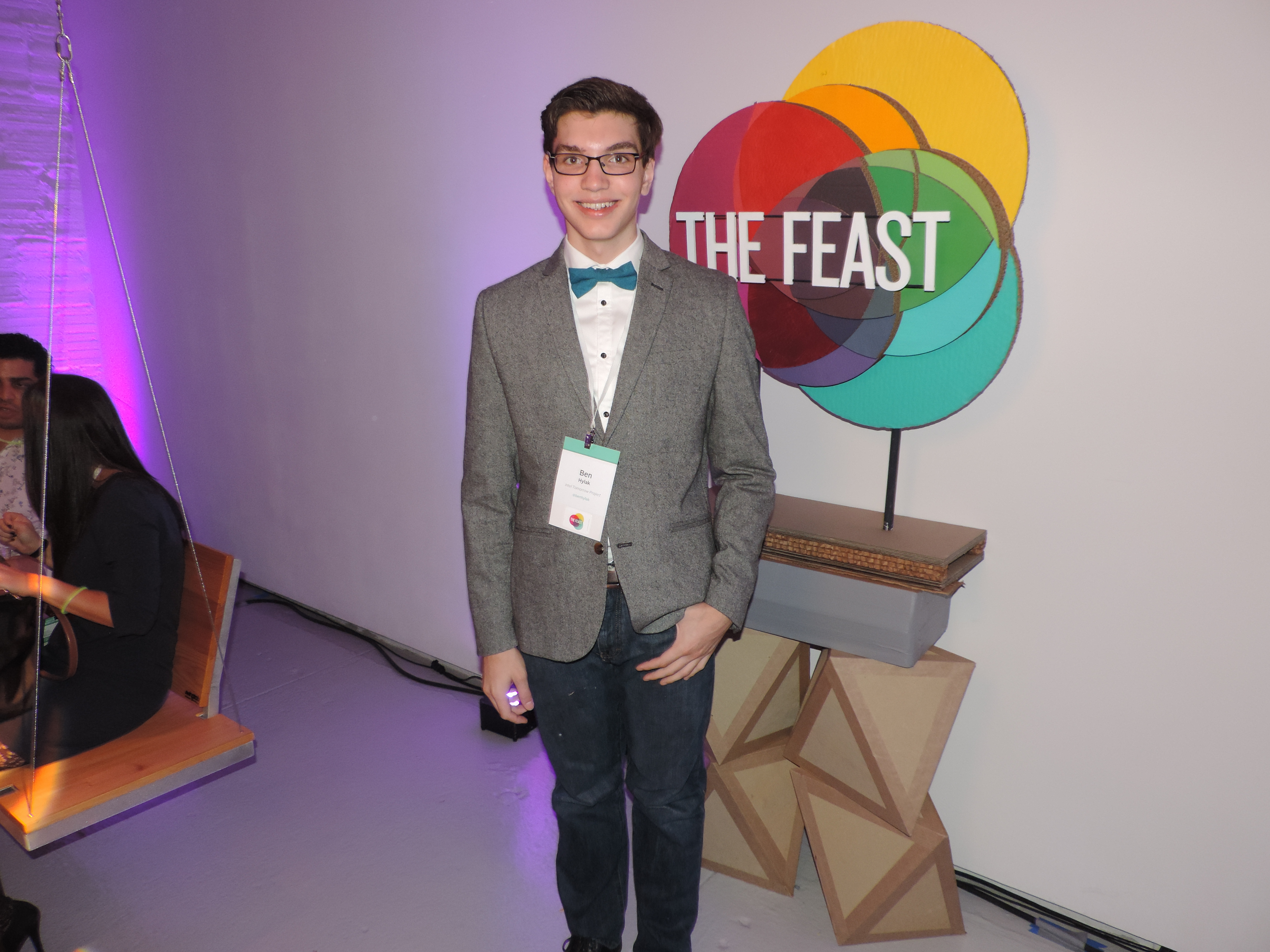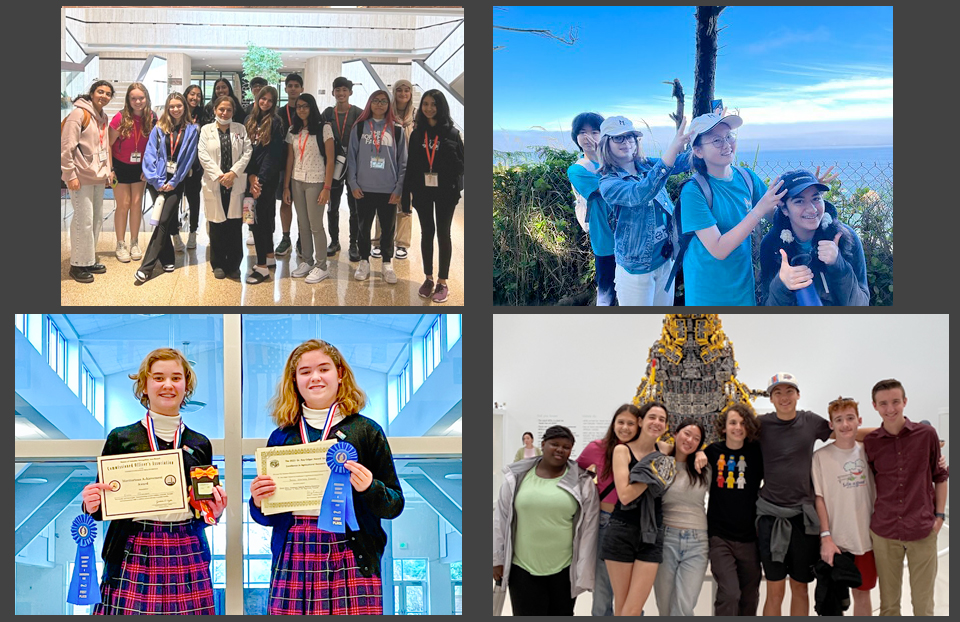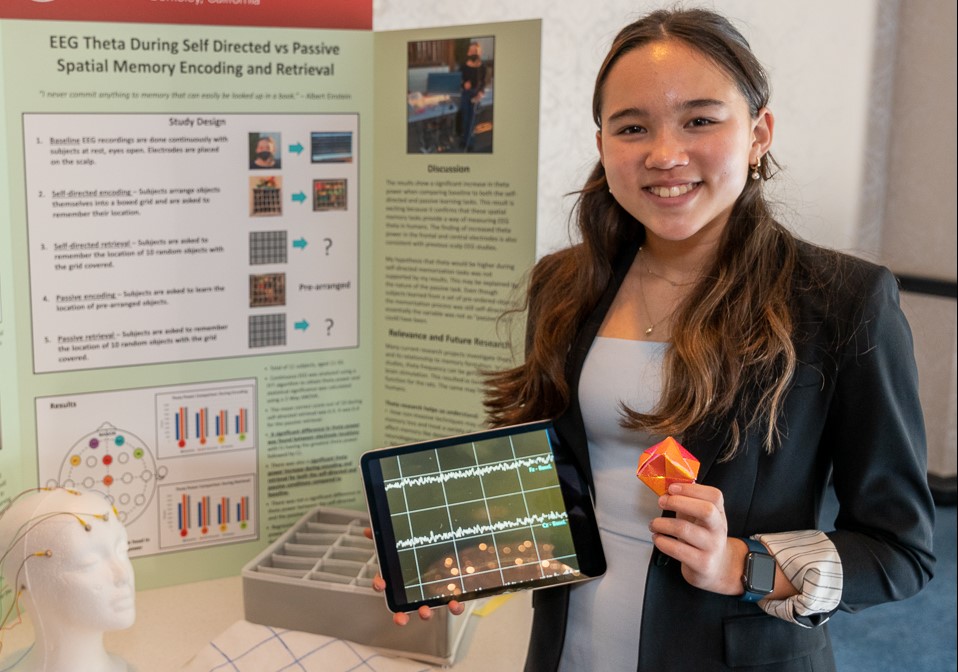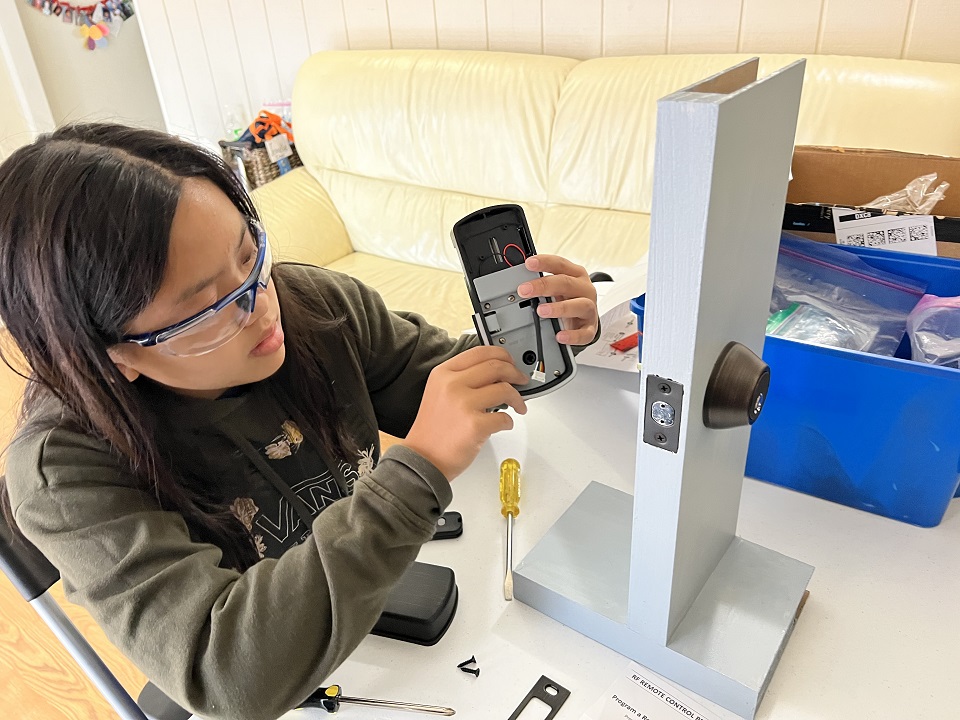Ben Hylak, Broadcom MASTERS Alum, Writes Science Fiction Story for Tomorrow Project Anthology

Benjamin Hylak won 2nd place in the 2011 Broadcom MASTERS and his science fiction story, “Bread,” was recently featured in a Tomorrow Project anthology. Have your own science fiction ideas? Individuals worldwide between 13-25 can enter The Future: Powered by Fiction through December 31, 2013.
In seventh grade, I had a science teacher who really cared. He was passionate, almost giddy, about everything he taught, and it was obvious science was in his genes. Science was who he was, and who he wanted to be, and moreover, he was proud of it! He transmitted such an enthusiasm for science, and wore his unconventional attitude with such grace, that I was intrigued. He taught me that it was okay – no, it was awesome! – to love science, and using it right, we could change the world. It was this teacher, Mr. Bloh, who was responsible for registering our school with the local science fair circuit and Society for Science & the Public affiliated fairs, and he made scientific investigation, method and process part of our classroom experience.
After a decent showing at the science fair in seventh grade, in eighth grade, I worked extremely hard, did months of research (even over the summer!), and entered a project I loved. I built a telepresence robot to help improve the quality of life for elderly people who so often live alone, or have relatives and friends who can’t visit them for many reasons.
After the school fair, I went to the county science fair. Now, that was a whole new world! Suddenly, projects – good ones – caught my eye. Instead of some variant of “What is the best laundry detergent?” or a baking soda volcano, there were projects that were new and different, interesting and meaningful. I interviewed with inquisitive judges who really seemed to care about my project, and who asked me probing questions about my motives and processes. That made me think even deeper about what I had done and why. The county fair was a resounding success, and I went to the next level.
At the regional science fair, every project was interesting, and most definitely, “loved.” I salivated over the high schooler’s projects on cancer and wireless electricity while fearing for the fate of my own project. After the regional fair, in which my project was once again very successful and my confidence and love for science boosted, I was given the chance to enter the Broadcom MASTERS. I could hardly wait to get my application in!
I was invited to represent my school, my county, and my region as one of 30 finalists in the Broadcom MASTERS. I’ll never forget that first night in Washington, DC. When I began to meet and talk to the other 29 kids, the conversations were very different. These kids were from all over the country, with lots of extracurricular interests ranging from music to animals and yes, even many sports, and not one of them was “weird” or awkward. The whole concept was mindboggling. Despite what my parents tried to tell me, I had grown up thinking people who liked science and math were weird nerds or antisocial geeks who could never fit in or sustain a social life beyond the book they were reading! Suddenly, I realized how powerfully inaccurate those misconceptions were, and how really proud I felt to be “cool” and “smart” at the same time – in fact, I was beginning to feel a whole new level of cool that came from being smart, and it was something I wanted more of.
A few months later, I received a call from SSP inviting me to the White House Science Fair. After making a quick joke about “having to check my calendar,” I graciously accepted, and off I went. The White House Science Fair represented something very special to me. By hosting a science fair, the President was telling the nation that science was just as important as the NBA or NFL players he invites there after winning the championship. When I returned to school after that fair, my peers were just as excited as I was. Local news stations did stories. For a couple weeks, I was a mini-celebrity.
More recently, I received an invitation from SSP inviting me to submit a science fiction story that could possibly be included in an anthology produced by the Tomorrow Project.
At first, I was disappointed. Why would SSP be promoting a writing competition? I wondered if writing could even be considered science. Where was the research? Where was the data? How about conclusions? I read through the prompts of the Tomorrow Project and quickly understood. They were questions that needed to be answered. They needed a hypothesis. I read through the list of potential topics and my favorite question was: what we are going to do in 2050 when there is not enough food to support the population? After researching it, I came to realize just how big of a problem the food supply was!
“This should be much easier than building a robot,” I thought. “After all, you don’t have to make anything, there’s no soldering, no parts, no programming bugs. You just have to be creative and write stuff down.” I couldn’t have been more wrong! In fact, I learned that writing is very much like building a robot and even rivals the process in difficulty. You have to start with an overall design, make a frame/outline, then slowly add more and more parts until you have something in front of you that “moves,” that gets attention.
My story, along with a host of other stories with intriguing questions and consequences, was published in a book called “Cautions, Dreams and Curiosities,” an Intel Tomorrow Project Anthology. Authors ranged from students or science fair geeks like me, to New York Times Best Sellers and world famous scientists. The story was then presented at an event called “The Feast” in New York. I was fortunate to be an invited guest, along with my parents.
There was a classy, high-tech “natural cool” vibe permeating the atmosphere of this eclectic venue, complete with recycled cardboard furniture, organic appetizers and biodegradable – yet chic – eating utensils!
I piled up my food a little less than high – considering my story, “Bread,” that got me here – and sat at a table. I feared feeling awkward – middle school all over again – as there were groups chatting and laughing sitting at other tables, and maybe I just wouldn’t fit in. Before a full minute was up, however, a, curious guy who looked to be in his late twenties sat down across from me. Within seconds we were engaged in a conversation on the trends of social networking, and as the youngest person in the group, I guess my opinions were a valuable asset. After all, these were science minded people, and my comments provided useful data, so I once again found my comfort zone.
Our conversation was cut short as we were ushered upstairs. First, there were a few inspiring presentations from entrepreneurs to team builders. My personal favorite had to be the Makey Makey presentation during which Jay Silver and Eric Rosenbaum turned random “victims” from the crowd into circuited, musical instruments that performed an impres sive version of Michael Jackson’s “Billy Jean.”
sive version of Michael Jackson’s “Billy Jean.”
Waves of scientists, thinkers, entrepreneurs, CEOs and writers flooded the stage and simultaneously entertained and educated us all. Brian David Johnson, the Intel Futurist who had so inspired me with his online videos and insights on the future, spoke about the Tomorrow Project. I almost fell out of my chair with excitement when he asked me to stand, and then described my story, “Bread,” as amazing, interesting and “crazy awesome,” and mentioned how stories like mine could change the world.
Quickly changing gears after Brian’s presentation, each table had to tackle problems, called “The Challenges” on Health, Veterans, or Education. My table included everyone from Google employees to designers of a brand new high speed train, but no one treated me like a kid. They treated me like a scientist. We spent the entire day coming up with solutions to problems and working together as a team. We listened to each other’s opinions, did research on the spot, and came up with creative answers. By the day’s end, our team had devised an interesting concept to tackle obesity: an app that could turn everyday activities, such as shopping, cooking or walking the dog, into a competitive, online game to address the sedentary lifestyles of many Americans.
Beyond the many interesting people I met, the intriguing presentations that made me think, the passionate and cooperative teamwork, and all of the food I enjoyed, I came away from the whole experience of having written a scifi story and attending this event with one overriding conviction: love what you do, and do it well. That’s the heart of science fair, and the soul of any successful business.
Oh yeah, and as the Intel Tomorrow Project encourages all of us:
Always remember: You can change the future.


